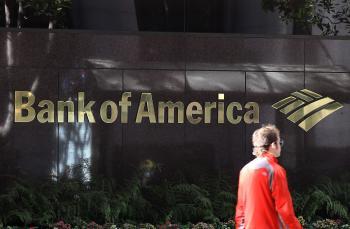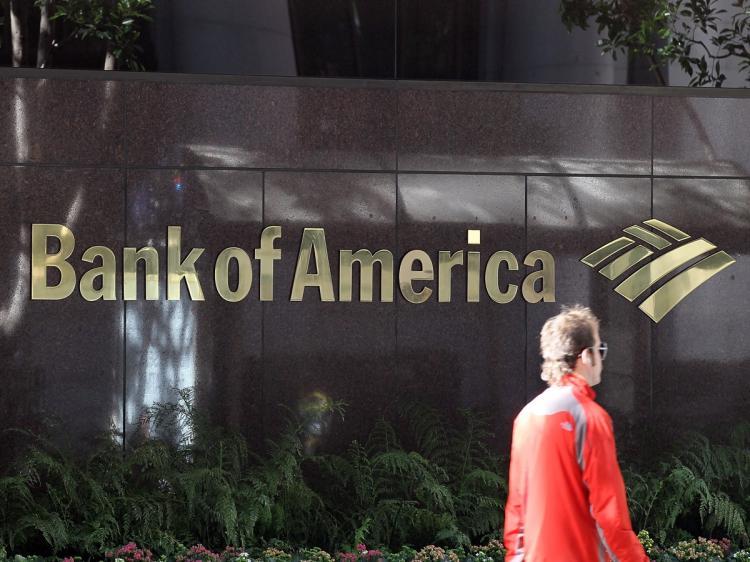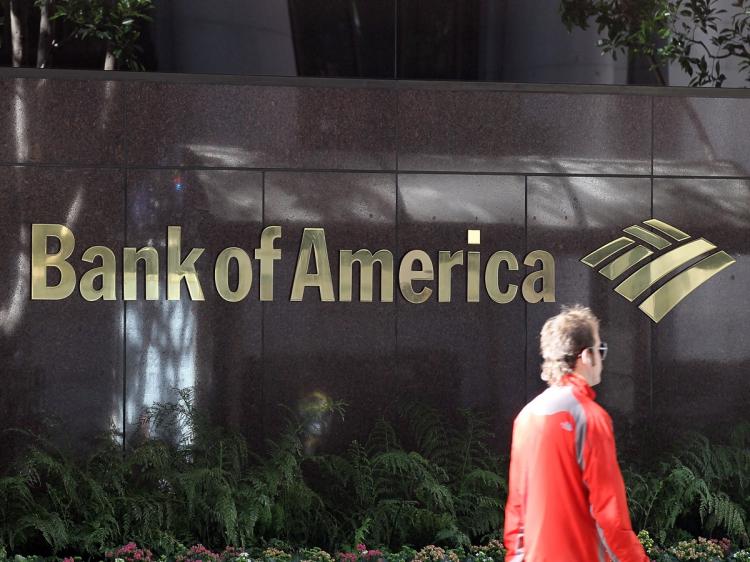WASHINGTON—During 2010, U.S. banks increased their lending, although most of the credit was extended to large- and medium-sized businesses.
“Research by Greenwich Associates shows credit conditions have become highly favorable for the largest U.S. companies, who currently have ample access to both bank credit facilities and low-interest bond offerings,” according to the latest Greenwich Market Pulse survey.
Banks still think twice before lending to the small-sized business sector, with 50 percent of the Greenwich survey respondents reporting problems in securing loans and one-third reporting a worse borrowing environment than in the beginning of 2010.
“Continued difficulties in securing affordable credit have left many small businesses and weaker mid-sized companies wondering about their ability to sustain their businesses through the year ahead,” according to Greenwich.
The majority of both small and the lower end of mid-sized companies are pessimistic. They foresee a dismal 2011 in securing credit, with equipment purchases and hiring curtailed. One third is even predicting deterioration in the economic environment.
“Three out of every four workers in the United States are hired by a firm with fewer than 250 employees. These small businesses are at the center of the economy. Yet, today, many small businesses are still unable to access credit,” according to a September 2010 U.S. Congress Joint Economic Committee report.
The report alleges that tight lending practices for small business are the culprit for the dismal U.S. unemployment rate.
The U.S. Congress Joint Economic Committee concluded, just as Greenwich Associates, that large- and mid-sized firms continue to hire, while small firms have reversed their hiring practices to a trickle.
The Federal Reserve Bank of New York also concluded that unless small business access to credit relaxes, the U.S. unemployment numbers won’t contract.
Small Businesses “historically have created more jobs than larger firms at the start of economic recoveries. Yet recent contractions in business borrowing may be limiting the capacity of small businesses to play this critical role,” said the Federal Reserve Bank of New York in an October 2010 report.
More than 75 percent of small businesses that applied for loans either were turned down or received only a fraction of what they needed to remain a viable business.
Despite the excellent credit histories of applicants, perceived declining business opportunities prevented banks from lending even to those who had not defaulted on any prior loan.
The Small Business Optimism Index dropped to 92.6, losing 0.6 points in December, according to a National Federation of Independent Business (NFIB) survey.
The decrease mirrored the small business expectations for the future. It was “not a huge change but not the hoped-for rebound that would signify more growth in the small business sector,” according to the NFIB.
The NFIB notes that small-sized firms’ confidence in any economic recovery is at an all-time low, and as small businesses don’t see an upswing in sales, hiring is pushed to the sidelines.
“It appears that the small business sector remains in a ‘rut,’ unable to find reasons (drained by a 2 plus year recession period) to ramp up hiring and capital spending,” observed the researchers of a recent NFIB report.
Job creation took another hit due to the health care regulations by the Obama administration. The risk of increased labor cost due to the regulations prevents small businesses from even thinking of hiring more people.
“A worker must be able to at least earn their pay if they are to be employed. Adding new labor regulations such as those in healthcare make this hurdle even harder to overcome,” according to the NFIB report.
Next: Hiring Statistics Vary
“Clearly, December showed no surge in small business hiring,” according to an article on Calculated Risk, a financial research website.
If the past mirrors the future and the results of a great number of surveys of small businesses convey the true mindset of small-business owners, the hiring of employees will be on the back burner.
Data collection firms often use different statistical approaches; therefore, the reported results on small business hiring vary. A majority see a decline, while there are those who report increases. Thus, it is difficult to truly predict the future.
Small business hired an additional 117,000 employees during December, according to the ADP National Employment Report, released at the beginning of this month.
Also, the Intuit Small Business Employment Index showed a 0.3 percent hiring increase by small businesses in December.
“We generally see a rise in employment for all businesses in December, but this year it is unusually strong. We can hardly see the recovery in overall national employment, but among small businesses, the recovery, albeit slow, is unambiguous,” according to a January Intuit statement.
In June 2010, the U.S. House of Representatives passed the Small Business Jobs and Credit Act of 2010, which was signed by President Barack Obama in Sept. 2010.
The bill provided more than $730 million in loans to more than 1,400 small businesses, a $30 billion small business lending fund, and elimination of the capital gains tax. In addition, President Obama also signed into law a number of small business tax cuts.
Since the president signed the Jobs Act, the U.S. Small Business Administration (SBA), has guaranteed over $10.3 billion in loans.
“The new law is providing critical resources to help small businesses continue to drive economic recovery and create jobs,” according to the SBA website.
“Research by Greenwich Associates shows credit conditions have become highly favorable for the largest U.S. companies, who currently have ample access to both bank credit facilities and low-interest bond offerings,” according to the latest Greenwich Market Pulse survey.
Banks still think twice before lending to the small-sized business sector, with 50 percent of the Greenwich survey respondents reporting problems in securing loans and one-third reporting a worse borrowing environment than in the beginning of 2010.
“Continued difficulties in securing affordable credit have left many small businesses and weaker mid-sized companies wondering about their ability to sustain their businesses through the year ahead,” according to Greenwich.
The majority of both small and the lower end of mid-sized companies are pessimistic. They foresee a dismal 2011 in securing credit, with equipment purchases and hiring curtailed. One third is even predicting deterioration in the economic environment.
Tight Lending Environment Suppressing Recovery
“Three out of every four workers in the United States are hired by a firm with fewer than 250 employees. These small businesses are at the center of the economy. Yet, today, many small businesses are still unable to access credit,” according to a September 2010 U.S. Congress Joint Economic Committee report.
The report alleges that tight lending practices for small business are the culprit for the dismal U.S. unemployment rate.
The U.S. Congress Joint Economic Committee concluded, just as Greenwich Associates, that large- and mid-sized firms continue to hire, while small firms have reversed their hiring practices to a trickle.
The Federal Reserve Bank of New York also concluded that unless small business access to credit relaxes, the U.S. unemployment numbers won’t contract.
Small Businesses “historically have created more jobs than larger firms at the start of economic recoveries. Yet recent contractions in business borrowing may be limiting the capacity of small businesses to play this critical role,” said the Federal Reserve Bank of New York in an October 2010 report.
More than 75 percent of small businesses that applied for loans either were turned down or received only a fraction of what they needed to remain a viable business.
Despite the excellent credit histories of applicants, perceived declining business opportunities prevented banks from lending even to those who had not defaulted on any prior loan.
The Small Business Optimism Index dropped to 92.6, losing 0.6 points in December, according to a National Federation of Independent Business (NFIB) survey.
The decrease mirrored the small business expectations for the future. It was “not a huge change but not the hoped-for rebound that would signify more growth in the small business sector,” according to the NFIB.
The NFIB notes that small-sized firms’ confidence in any economic recovery is at an all-time low, and as small businesses don’t see an upswing in sales, hiring is pushed to the sidelines.
“It appears that the small business sector remains in a ‘rut,’ unable to find reasons (drained by a 2 plus year recession period) to ramp up hiring and capital spending,” observed the researchers of a recent NFIB report.
Job creation took another hit due to the health care regulations by the Obama administration. The risk of increased labor cost due to the regulations prevents small businesses from even thinking of hiring more people.
“A worker must be able to at least earn their pay if they are to be employed. Adding new labor regulations such as those in healthcare make this hurdle even harder to overcome,” according to the NFIB report.
Next: Hiring Statistics Vary
Hiring Statistics Vary
“Clearly, December showed no surge in small business hiring,” according to an article on Calculated Risk, a financial research website.
If the past mirrors the future and the results of a great number of surveys of small businesses convey the true mindset of small-business owners, the hiring of employees will be on the back burner.
Data collection firms often use different statistical approaches; therefore, the reported results on small business hiring vary. A majority see a decline, while there are those who report increases. Thus, it is difficult to truly predict the future.
Small business hired an additional 117,000 employees during December, according to the ADP National Employment Report, released at the beginning of this month.
Also, the Intuit Small Business Employment Index showed a 0.3 percent hiring increase by small businesses in December.
“We generally see a rise in employment for all businesses in December, but this year it is unusually strong. We can hardly see the recovery in overall national employment, but among small businesses, the recovery, albeit slow, is unambiguous,” according to a January Intuit statement.
Government Coming to the Fore
In June 2010, the U.S. House of Representatives passed the Small Business Jobs and Credit Act of 2010, which was signed by President Barack Obama in Sept. 2010.
The bill provided more than $730 million in loans to more than 1,400 small businesses, a $30 billion small business lending fund, and elimination of the capital gains tax. In addition, President Obama also signed into law a number of small business tax cuts.
Since the president signed the Jobs Act, the U.S. Small Business Administration (SBA), has guaranteed over $10.3 billion in loans.
“The new law is providing critical resources to help small businesses continue to drive economic recovery and create jobs,” according to the SBA website.







Friends Read Free